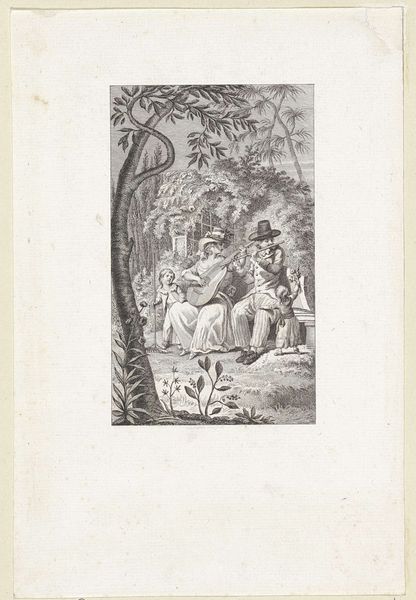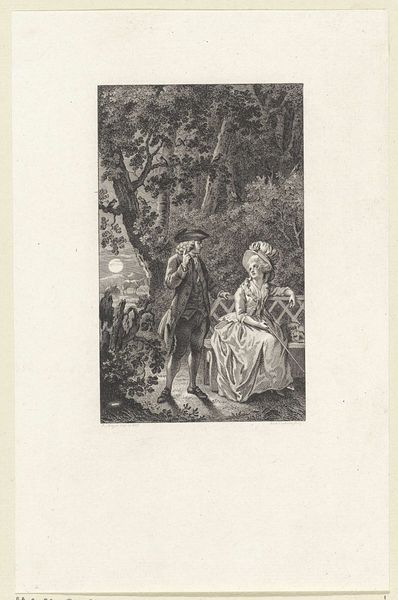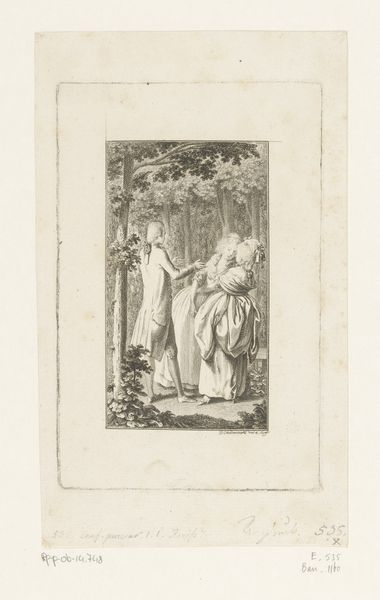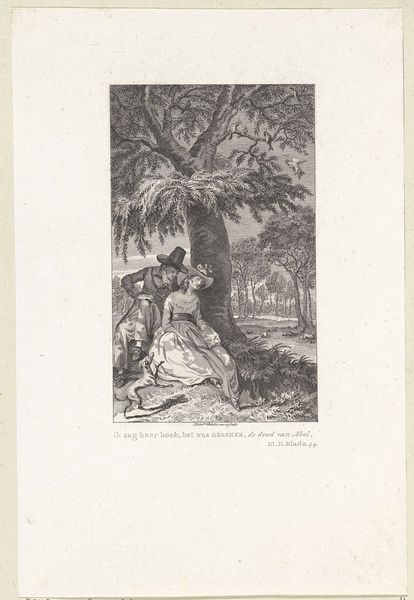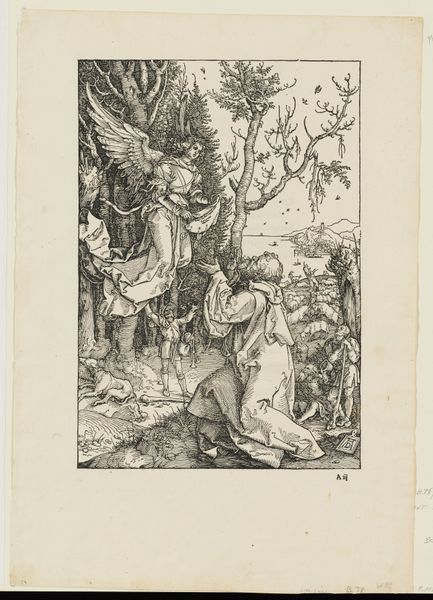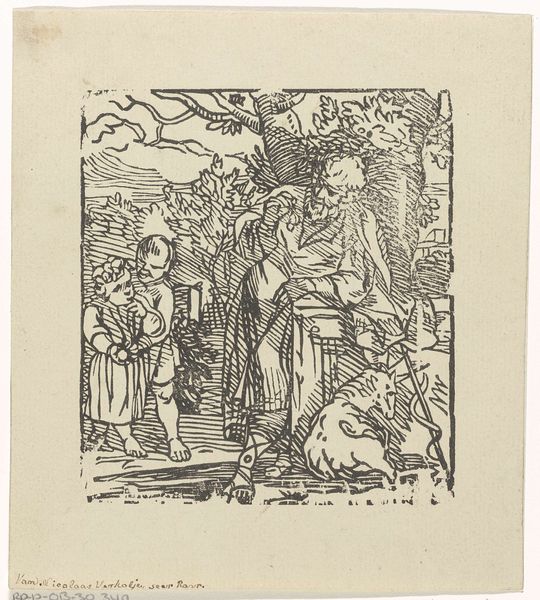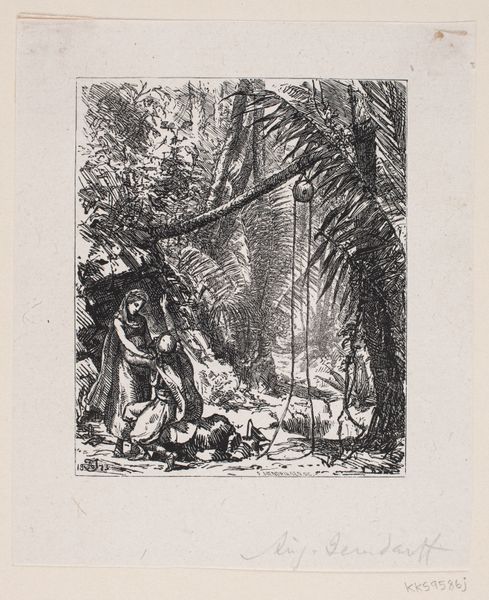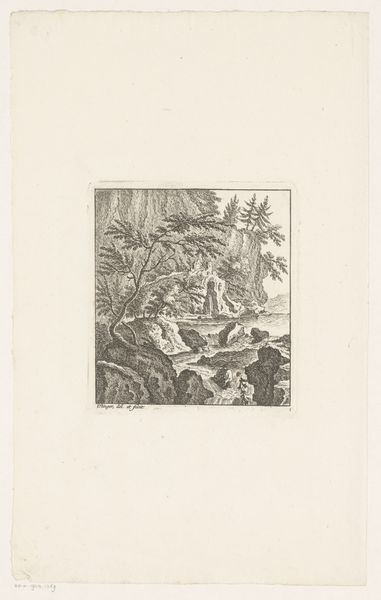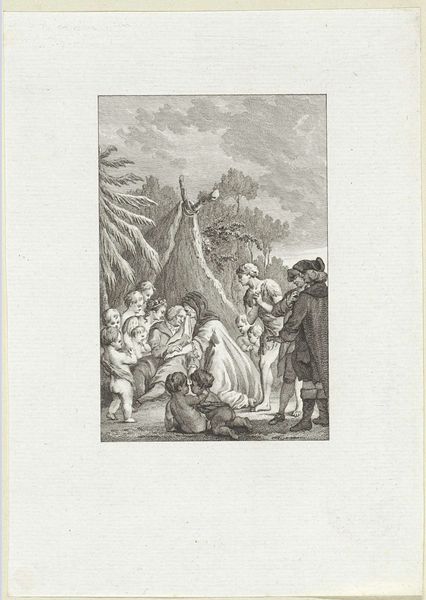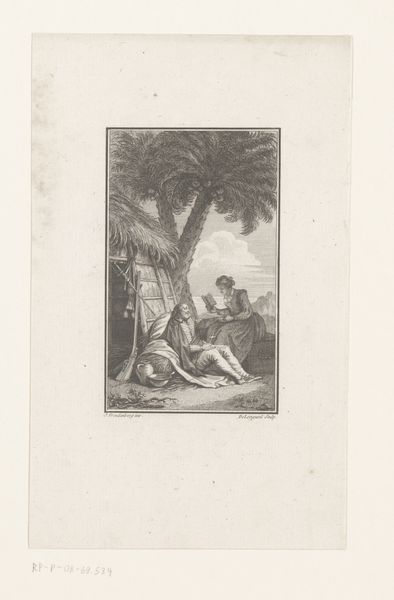
Reinhart met twee tot slaaf gemaakte mannen in het oerwoud bij onweer before 1791
0:00
0:00
Dimensions: height 238 mm, width 157 mm
Copyright: Rijks Museum: Open Domain
Curator: Before us, we have a work by Reinier Vinkeles, titled "Reinhart met twee tot slaaf gemaakte mannen in het oerwoud bij onweer," created sometime before 1791. It's an engraving, currently held here at the Rijksmuseum. The English translation is Reinhart with two enslaved men in the jungle during a thunderstorm. Editor: It’s strikingly stark, isn't it? The drama of the lightning in contrast to the human drama feels both deliberate and unsettling. There is an overwhelming sense of oppressive stillness that foreshadows violence. Curator: Absolutely. The storm acts almost as divine judgment, doesn’t it? Lightning was often symbolic of revelation or a disruption of the established order. Reinier might be questioning the morality and stability of a society built on slavery by setting the scene within a tempest. Editor: It's also the scale that catches me. It’s a relatively small print, isn’t it? Which is interesting because it is almost domesticating a scene of brutal power dynamics. I think it amplifies the personal, individual suffering, rather than the grand narrative of the slave trade, in that way inviting perhaps a more direct empathetic connection from its original viewers. Curator: An excellent point. Think about the symbols: the bound men and the staff, held loosely by Reinhart, the only "free" person. Vinkeles highlights the relationship through material possessions and tools for control, even a simple cane becomes symbolic of ownership and social domination within this pictorial lexicon. Editor: The choice of a thunderstorm is very loaded. Often, enslaved people equated thunder or storms with powerful deities—an ancestral divine force who are perhaps witnessing this suffering. Within these violent scenes, are there traces of cultural memory of resistance or acts of faith? Curator: And, to conclude, one can't ignore how this print allows us to reflect on the role of art in both perpetuating and potentially critiquing colonialism's visual vocabulary. Editor: Right, how Vinkeles uses recognizable symbols from this moment to both speak to and, to some degree, subvert its underlying premises of race and enslavement is really profound.
Comments
No comments
Be the first to comment and join the conversation on the ultimate creative platform.
